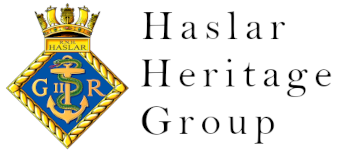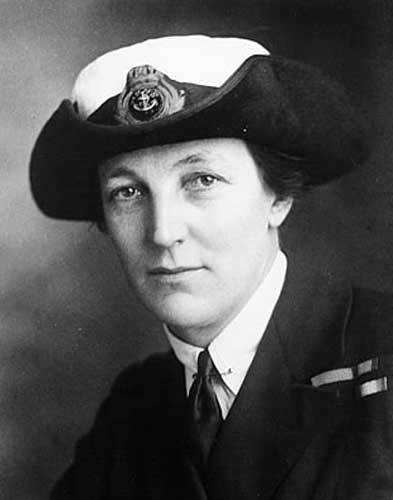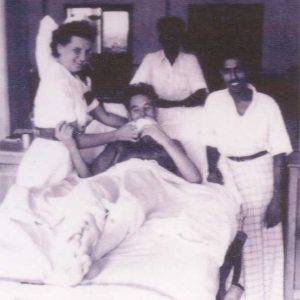VAD
Many of us who worked in Royal Hospital Haslar take for granted the various service nursing units that have served in Haslar over the years. One such unit has received little mention but served throughout the military with distinction namely the Voluntary Aid Detachment (VAD).
The VAD came into being in 1909 to provide additional nurses in the event of war. It was formed originally by the British Red Cross Society, followed later by the St. John and St. Andrew’s Ambulance Service.
A small number of nurses obtained their first experience of war and nursing in the Balkans in 1912.
Katherine Furse led a pioneer band of ladies to France in 1914 having already formed the VADs in readiness before the war. In 1917 when the admiralty wanted to form the WRNS it was to Katherine, later Dame Katherine Furse, that they turned.
Dame Katherine was to become the first Director of the WRNS and brought other VADs with her to form the HQ staff.
The VADs of 1914-18 served in Europe, the Mediterranean and North Africa. They were further joined by units from the Dominions and in all 126,000 served in the First World War, of whom 245 were killed in service of their country.
After the war the service reorganised to supplement the medical services in Service Hospitals – the VAD would rermain mobile and the immobile formed the Nursing Auxiliaries of the Second World War.
In the Second World War, 15,000 members enlisted in the Army, Royal Navy and Royal Air Force. In 1944 the Army VADs were absorbed into the ATS/QA as nursing orderlies. Some chose to transfer to the Royal Navy who continued to have VADs serving with them until 1960 when they were absorbed into the Queen Alexandra Royal Naval Nursing Service (QARNNS). The VAD serving with the Royal Air Force were disbanded at the end of the Second World War.
Many of the VAD’s who served at the Royal Naval Hospital Haslar during the war ran the underground operating theatres which were situated in the hospital cellars under what is now ‘D’ & ‘E’ blocks and they also staffed wards and departments within the hospital.
After the war the service reorganised to supplement the medical services in Service Hospitals – the VAD would rermain mobile and the immobile formed the Nursing Auxiliaries of the Second World War.
In the Second World War, 15,000 members enlisted in the Army, Royal Navy and Royal Air Force. In 1944 the Army VADs were absorbed into the ATS/QA as nursing orderlies. Some chose to transfer to the Royal Navy who continued to have VADs serving with them until 1960 when they were absorbed into the Queen Alexandra Royal Naval Nursing Service (QARNNS). The VAD serving with the Royal Air Force were disbanded at the end of the Second World War.
Many of the VAD’s who served at the Royal Naval Hospital Haslar during the war ran the underground operating theatres which were situated in the hospital cellars under what is now ‘D’ & ‘E’ blocks and they also staffed wards and departments within the hospital.
The VAD (RN) also manned hospital ships and served in hospitals both in the UK especially RNH Haslar and overseas, serving RNH Malta, North and South Africa, the Far East, Ceylon, India and Australia. Following the second World War also in Hong Kong and RNH Singapore.
Their main duties were predominately nursing but they also undertook clerical and other ancillary support roles.
Between 1917 and 1960 approximately 5,800 VADs served with the Royal Naval Hospital Haslar and other Naval Hospitals.
Their service to this Hospital and patients especially during the time of war should not be forgotten.
The Haslar Cross was presented by the Haslar Heritage Group in 2011 in memory of all those who served at Royal Naval Hospital Haslar. Here Maurice and Sylvia Bell admire the new Haslar Cross. Sylvia served at Haslar in the Voluntary Aid Detachment during WWII and at 96 has many stories to tell of her time as a VAD.
The oak cross arising from old Oak block signifies the new beginning for Haslar. The old Oak block is part of a ships timber that was used in building Haslar in 1745-62 and was taken from a ceiling in the hospital during refurbishment in 1998. Ships timbers were used in the build having been taken from ships hulks broken up on the shore of Portsmouth Harbour. The timber is believed to be 15th-17th Century. The front plaque states ‘Haslar Cross’ In memory of all who served at Haslar. The cross was made by Cdr Ken Enticknap QGM and presented to St Luke’s on the day of the service.















